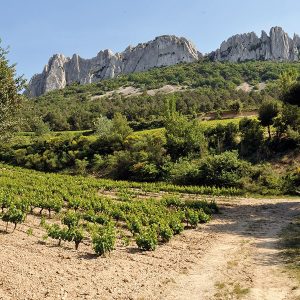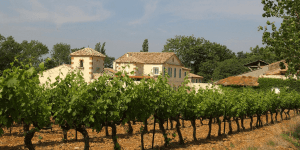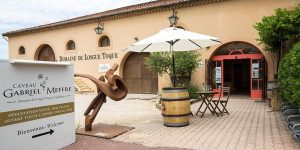Learn wine tasting
Wine tasting, a technique within everybody's reach
Wine tasting can sometimes seem like a difficult business to some of us, which is why we have decided to give you some useful pointers to help bring it within everybody’s reach. Here is a simple tasting manual which, in fact, is nothing more than a methodical approach to follow. In other words, everyone can learn how to taste wine properly.
The optimal conditions for wine tasting
First and foremost, it is important to know the fundamentals of tasting since it is an approach that requires the right conditions.
When tasting, you should observe the colour of the wine; for this, it is important to be in a place with good natural lighting or, failing that, to use a white surface as a background.
Second tip: choose a place without any other distracting odours which could influence your perception. The ‘nose’ (i.e. fragrance) is very important when tasting a wine.
And finally, you should be feeling well: wine tasting requires concentration. You will not have the same perception if you are tired, stressed or have a cold.
The correct steps to follow
And now, in practical terms, how do we go about tasting a wine?
We can learn more about a wine by examining its 3 components: colour, fragrance and taste.

Discovering the colour of a wine
The first step in tasting is a visual examination, in other words looking at it. The aim is to define the intensity of the colour and the reflections of the wine. To do this, simply hold your glass up to the light or look at it against a white surface and describe what you see.
Here are the main colours observed by sommeliers:
| White wines | Rosé wines | Red wines |
|---|---|---|
| Colourless | Greyish | Cherry |
| Leaden | Pale pink | Ruby |
| Greenish yellow | Petal pink | Purple |
| Pale yellow | Salmon pink | Deep purple |
| Straw yellow | Flesh-coloured pink | Garnet |
| Golden yellow | Violet pink | Ink |
| Orangery | Dark pink | Brick |
| Amber | Red onion peel | Tawny |
| Brown | Orangey pink | Brown |
Color nuances by type of wine
| White wines and rosés | |
|---|---|
| Young | Pale golden yellow with hints of green |
| Developped | Golden yellow with hints of gold |
| Well developped | Amber yellow with hints of ochre |
Color nuances depending on the age of wine
| Red wines | |
|---|---|
| Very young | Bluish red with abundant hints of violet |
| Young | The hints of violet are getting softer |
| Developing | Some hints of brown |
| Developed | Reddish brown with hints of orange |
| Well developed | Orangey-ochre |

Discovering the nose of a wine
The second step is the olfactive examination, in other words, discovering its fragrances. The aim is to define the main aromas of the wine. For this, smell the wine a first time without swirling the wine around in the glass. The ‘first nose’ will reveal the wine’s main aromas: fruity, floral, spicy, vegetal, woody, animal, etc.
Then give the glass a gentle swirl to open up the wine so that it reveals more detailed aromas: cherry, pineapple, rose, acacia, cinnamon, white pepper, blackcurrant buds, moss, musk, leather, etc. It is this ‘second nose’ that helps to identify and characterise the wine more precisely.
| Main aromas | |
|---|---|
| Fruity | Apple, quince, pear, apricot, grape, cherry, black cherry, kirsch, plum, prune, raspberry, strawberry, blackberry, blackcurrant, redcurrant, blueberry, lemon, orange, grapefruit, lime, pineapple, banana, mango, lychee, melon, fig, almond, walnut, hazelnut, candied and dried fruits… |
| Floral | Rose, violet, iris, peony, carnation, honeysuckle, acacia, honey, orange blossom, lime tree flowers, hawthorn, jasmine… |
| Vegetal | Freshly cut grass, undergrowth, humus, moss, mushroom, bracken, ivy, earth, green leaves, dead leaves, blackcurrant bud, hay, tea, boxwood… |
| Spicy | Cinnamon, ginger, cloves, aniseed, pepper, green bell pepper, mint, bay leaf, thyme, oregano, marjoram, lavender, truffle, liquorice… |
| Woody | Cedar, havana, oak, old wood, bark… |
| Animal | Musk, leather, amber, marinade, fur, game, meaty… |
| Mineral | Gun flint, flint, shell, iodine, sulphur, petrol… |
| Empyreumatic | Smoky, burnt, grilled, roasted, torrefied coffee, cocoa, chocolate, toast, grilled almond… |
| Balsamic | Pine, resin, wax, beeswax, incense, vanilla, turpentine… |
| Etheric | Acid drop sweets, glue, nail varnish, soap, candle, yeast… |

Discovering the taste of a wine
The last step is of course to taste the wine.
Analysing the taste is an important moment since it calls upon your sensorial memory.
When tasting a wine, you can try to define :
– The ‘attack’, the first impressions of the wine in your mouth,
– The ‘finish’ in the mouth, the lingering aromas,
– And the aromatic persistence or ‘length’, i.e. how long the flavours remain in your mouth
For this take a first sip of the wine, then slightly part and purse your lips and breathe in so that air passes through the wine in your mouth and releases its aromas. Then close your lips and breathe in through your nose to intensify these aromas (retro-olfaction). You can then spit out the wine and appreciate its finish and aromatic persistence
You should also think carefully about the serving temperature. A wine served at the wrong temperature will not be able to reveal and fully develop its bouquet: an ill-judged serving temperature can ‘shatter’ the aromas of the wine.







